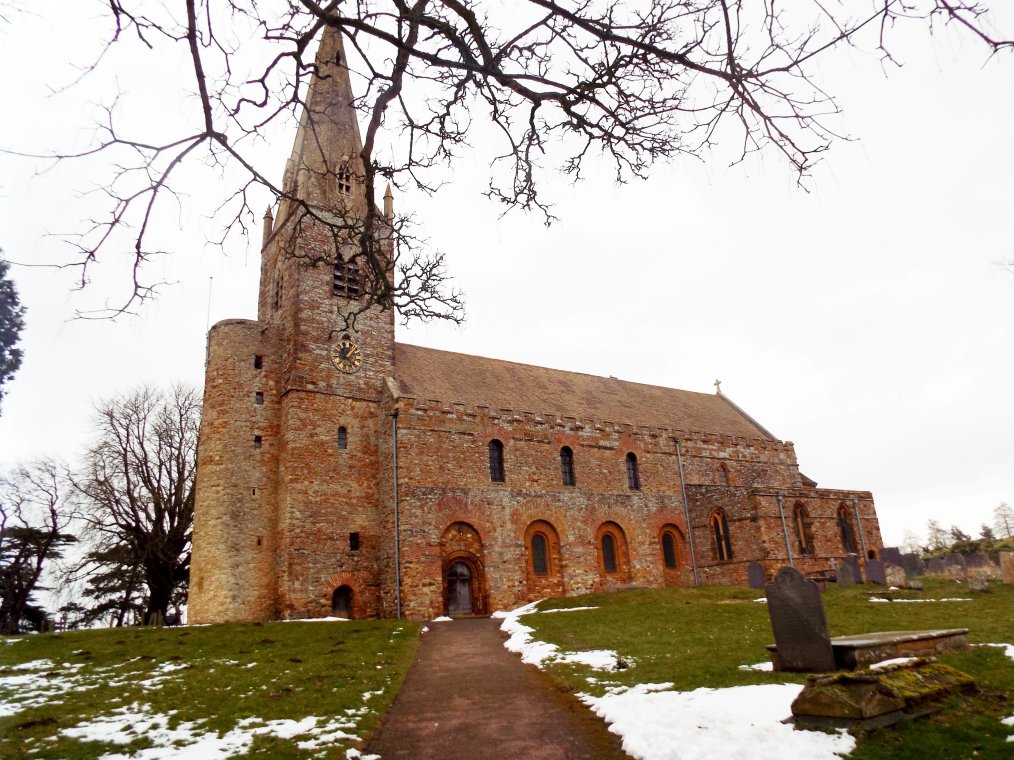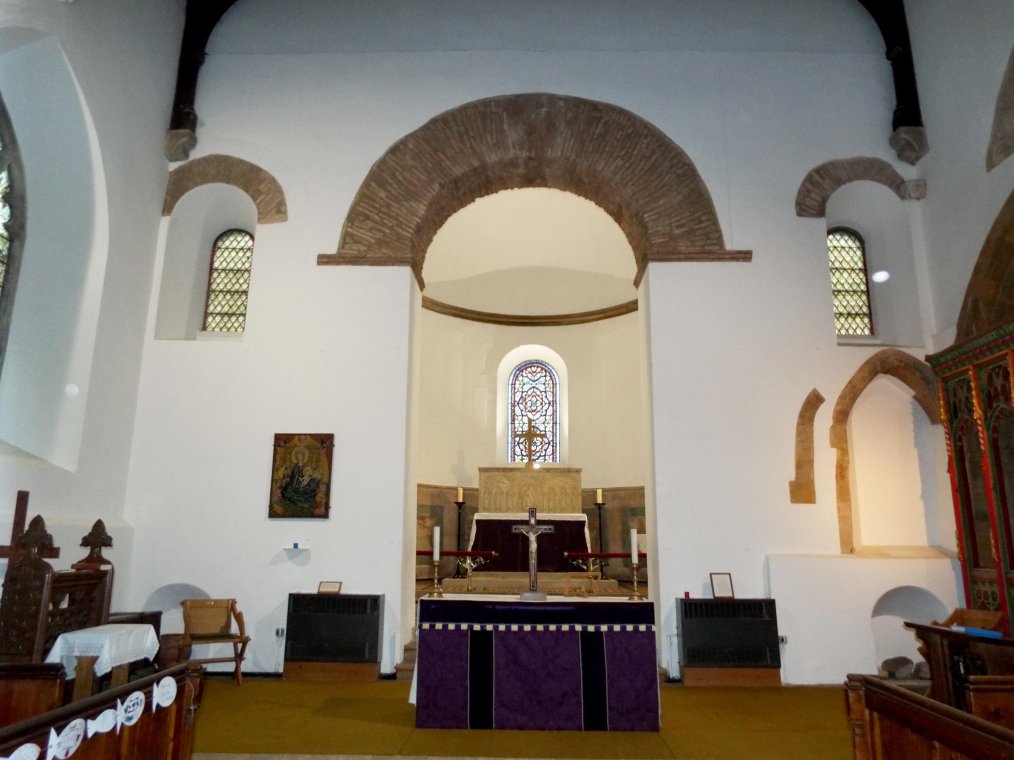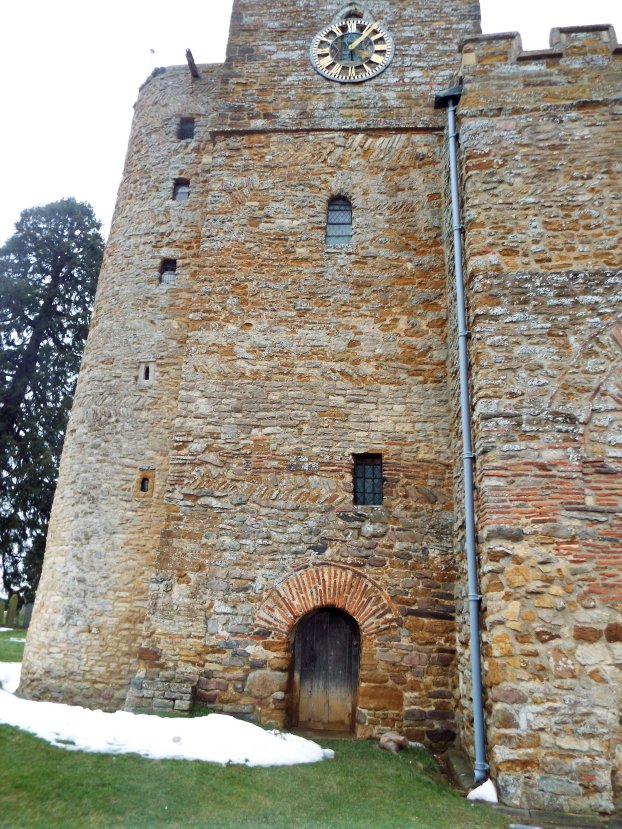Brixworth

The first thing to be noted is that the Peterborough version of the
Anglo Saxon Chronicle is not an original source, being written in the
period 1117 to 1121, using other Anglo Saxon Chronicles as its
basis. Regardless of this it used older material local to
Peterborough from source or sources generally unknown. The second
thing to note is that the chronicle makes absolutely no mention of
Brixworth in its entirety. This is rather a drawback to using
this ‘reference' as an accredited source.
This error probably comes from an Internet comment that states that
after the appointment of Sexwulf as bishop of Mercia in 675AD:
it came to pass that from that very monastery [Peterborough] were founded many others with monks and abbots from the same congregation, as at... Brixworth, Breedon, Bermondsey, Repton, Woking and many other places.
However, what the Peterborough Anglo Saxon Chronicle actually says is that King Eathelred granted to Peterborough minster the lands of Breedon, Rippingale, Cadney, Swineshead, Heanbyrig, Louth, Shifnal, Cottisford? (Costesford), Stratford, Wattlesborough, the Lizard, Aethelhuniglond
and Bardney. The placenames given are those currently accepted
and, although open to interpretation, quite obviously Brixworth is not
one of them.
According to Hugh Candidus (d.c.1160), after the death of Sexwulf,
Cuthbald succeeded him and added other monasteries to the mother house
of Peterborough, namely Thorney (Torneia), Brixsworth (Bricklesuurtha), Breedon (Bredun), Bermondsey? (Wermundeseya), Rippingale (Repingas), Woking? (Wochingas) and many others. The repetition of Breedon
and Rippingale from the ASC list suggests that the 2 passages may be
confused. Whatever the case, there is no definitive historical
evidence for the foundation date of Brixworth church.
It is often claimed that a Viking attack in 870AD destroyed Brixworth
minster aisles. The original contemporary ASC covering this
period reads:
869: Here the raiding army went back to York city and stayed there a year.
870: Here the raiding army rode across Mercia into East Anglia and took winter quarters at Thetford
and that winter King Edmund fought against them and the Danish took the
victory and killed the king and conquered all that land.
871: Here the raiding army came to Reading in Wessex...
Obviously there is nothing mentioned about any church, let alone
Brixworth. When this event was written up by the Peterborough
version of the chronicle between 1117 and 1121 they recorded:
869: Here the raiding army went back to York city and stayed there for a year.
870: Here the raiding army went across Mercia into East Anglia and took winter quarters at Thetford;
and in that year St Edmund the king fought against them and the Danish
took the victory and killed the king and conquered all that land and
did for all the monasteries to which they came. At the same time
they came to Peterborough: burned and
demolished, killed abbot and monks and all that they found there,
brought it about so that what was earlier very rich was as it were
nothing.
So, although it is possible Brixworth church was ruined by a host of
Vikings, there is absolutely no firm evidence that they actually did
this. It would have been a detour of some 40 miles going via
Brixworth on the direct route from York to Thetford.
By the time of Domesday Book the monastery had certainly disappeared, but the presence of a priest suggests that Brixlesworde
minster was now used as a parish church. So even the first solid
mention of the church in history is merely through its priest and not
its no doubt well established structure.
Between 1864 and 1866 the church was heavily restored, with its
fifteenth century rectangular chancel, internally some 27' by 19',
being removed and the early apse rebuilt in its present form.
Further the thirteenth century Verdun chapel to the south had its
western bay removed and a south porch covering the entrance doorway
removed. At the beginning of the twentieth century the nave roof,
south chapel, tower, spire and stair turret were repaired. None
of the roofs appear ancient.
Description
A Roman villa stood just north of the church and there are indications
that a settlement may have lain nearby to exploit the local ironstone
deposits. The ruins of the Roman buildings may have supplied the
Roman tiles built into the fabric of the church. Excavation in
the vicarage garden, some 150' east of the church tower, has revealed a
V shaped ditch about 10' across and 6' deep. Organic material
within it gave a radio carbon date of 710AD give or take 80
years. This gives it a date bracket of 640-790AD. Obviously
this fits within the suggested construction date for the minster if it
was built before 675AD; but, as has been noted, there is actually zero
historical evidence of this being the case. Within the ditch were
found 11 east to west orientated burials which gave radio carbon dates
stretching from 700AD to 910AD. Twelfth century secular buildings
were later built over the site, showing the graveyard was abandoned by
that date. So, beyond the ditching which may have surrounded the
church site and the use of apparently Roman materials in the structure
and its ancient design, there is nothing to date the first church with
any certainty.
The original church design is odd indeed, perhaps being nearest in size
to the supposed fourth century church at Silchester. Brixworth,
running east to west, seems to have originally consisted of a narthex
which gave access into a long nave with side aisles accessed through
Romanesque arches set in the nave walls. Beyond this lay a square
presbytery, which may have originally have been a chancel. At a
later pre-Conquest date a polygonal apse with pilaster buttresses was
added making the final extent of the Saxon church. This and the
aisles were later demolished, the apse being replaced by a longer,
rectangular chancel, while the removal of the aisles led to the
Romanesque arches being mainly filled in and given Romanesque
windows. The 2 side rooms at the west end of the aisles in the
narthex were also removed with the porch being converted into a
tower. At a later date still a semi circular stair turret was
added in place of the west door. Above the aisles were Romanesque
clerestory windows, while an early ambulatory passed around the
exterior of the apse. The blocked doorways to the this in the
east presbytery wall still exist.

A few courses of herringbone masonry
exist in the narthex where it has been converted into a tower.
These occur in 3 or 4 places in the south wall of the current tower and
end with some poor herringbone work
immediately under the projecting string course that marks roof height
of the nave. Above this the rest of the probably thirteenth
century tower stands. The D shaped stair turret on the site of
the west door also has similar occasional courses of herringbone
from its second floor upwards. Possibly all this herringbone work
is a single phase occurring when the aisles and narthex were
demolished. The loops in the stair turret are rectangular and
probably rebuilt, but the 2 lower, monolithic ones to the south may
well be original. There is no herringbone work
on the north side of the tower, only an odd, blocked doorway of unusual
shape. No quoins seem to have been used in any of this early work.

Copyright©2022
Paul Martin Remfry



